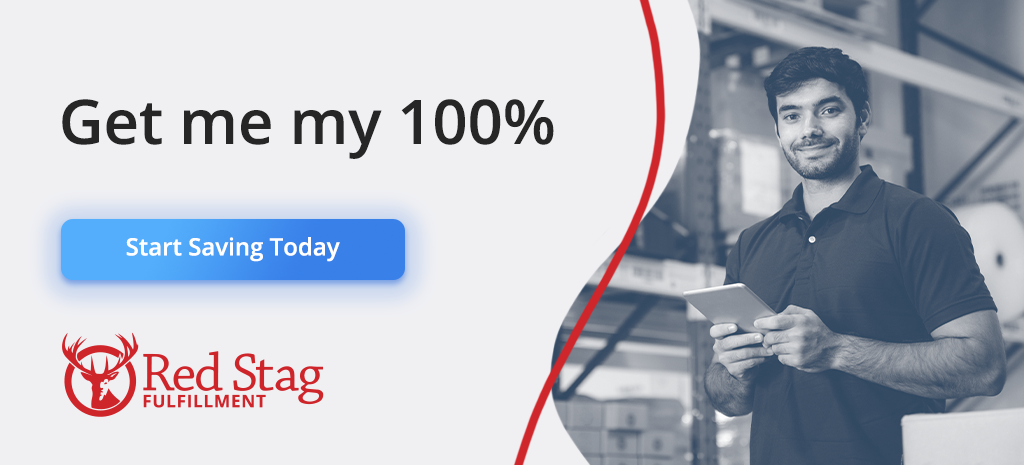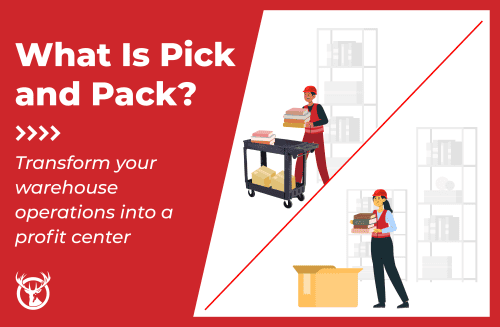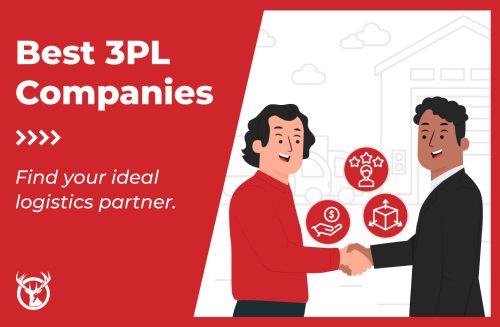When dark clouds are on the economic horizon, many eCommerce businesses start implementing cost-saving measures at breakneck speeds. Every order matters even more than before during a slowdown, and there just aren’t enough orders to go around. You need to squeeze as much value from each order as possible. One common place to start is addressing the fulfillment costs you incur just to get a product from point A to B. At face value, fulfillment might look like just the outbound shipping expense. But that simplistic take ignores a variety of shipping and fulfillment operations.
When you don’t calculate this “total cost to deliver,” you’re on your way toward making a bad decision with significant financial risk. And if you’re unsure how to make these calculations — how to put everything together to see the big picture — then it’s time to get help before you’re underwater.

Understanding the total cost to deliver
Total cost to deliver covers the end-to-end impact of receiving, storing, picking, packing, fulfilling, and ultimately paying a carrier to deliver the goods. It also includes the customer experience at each point, because getting things right improves your overall customer value stream. However, mistakes can come at any of these junctures — causing damage, shrinkage, improperly picked or packed orders, poor decisions around box size, or even those pesky carrier surcharges for incorrect addresses. Each decreases customer satisfaction, increases returns and cancelations, lowers reviews and repeat purchase behavior, and can blow up your warehouse labor and carrier expenditures.
Each step within these processes requires people, software, equipment, and facilities. Most operations have a variety of related costs as well, such as insurance, managers, and maintenance of associated facilities like bathrooms and parking lots.
Don’t just calculate the labor you use to run your warehouse. While this may make up roughly half of your daily fulfillment expenses, it fails to capture many areas where you can make changes and improvements to enhance efficiency or reduce cost.
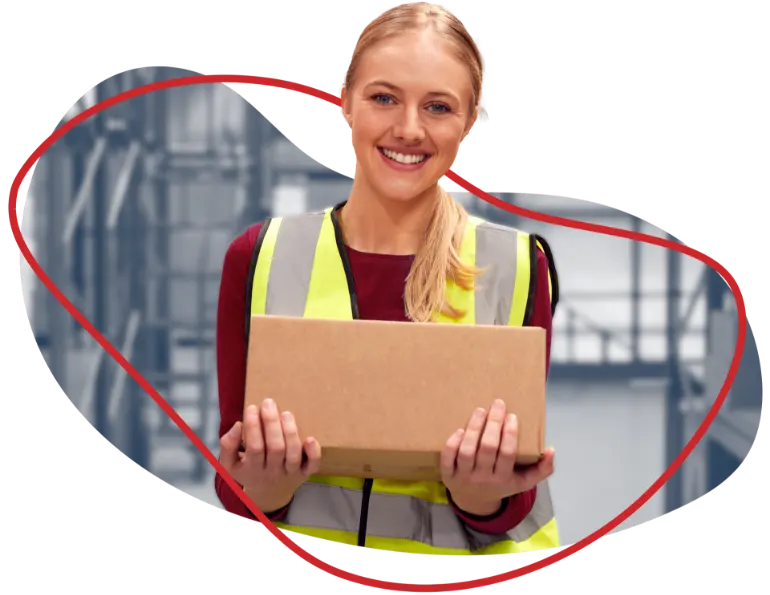
Addressing total cost to deliver
When you think about it, the total cost to deliver goes way beyond the shipping label and customer impact.
It erodes margins that your merchants could use to negotiate better rates and higher volumes. It eliminates marketing dollars that could instead generate more business. And it will reduce important capital because you’re unnecessarily spending resources on putting out fires.
Mistakes mean missing opportunities that move your business forward because your cash is stuck in the back of the house.
The entire process is a leaky bucket. Your job is even more difficult when you don’t have the systems, processes, or reporting to know where to start plugging the holes. When you’re unsure how to check or how bad your current leak is, it’s time to get help.
Enter the 3PL.
A 3PL is designed to perform all fulfillment steps professionally — with specific software and processes that remove time and cost from the equation. The best providers here work to develop expertise throughout logistics and fulfillment operations. Let’s face it — it is likely that making or procuring the product, marketing the product, and pleasing your customers are your top priorities. Moving items around in preparation for the consumer and slotting SKUs on shelves aren’t. But that’s where a premier 3PL shines.
In this simple infographic, we show you where the components of cost start to add up and why looking at just the “outbound shipping label” cost as it goes across a scanner is just one part of the equation. It shows where internal operations or a poor-quality partner could be harming your profitability and product value.

Is your partner preventing you from realizing the full value of your inventory?
As you start to think about your total cost to deliver your orders, it’s important to remember all the steps it takes to get started and perform fulfillment throughout the life of your operations. You may face increased costs when disruptions or inefficiencies occur during these steps. Alternatively, a reliable partner may generate greater savings across multiple procedures.
- A streamlined receiving process can eliminate labor hours for unloading containers and accurately entering inventory into a WMS.
- Shrinkage, which can average as high as 2% in the warehouse space, quickly adds up if you have no guarantees to eliminate it
- Every order sent out incorrectly leads to a potential lost sale and multiple fulfillment expenses as items are returned and replaced. Replacements can quickly more than double an order’s total cost to deliver.
Think of it this way. You send $100 worth of goods (total landed cost of goods) to a subpar 3PL. Even assuming standard averages, you’ll experience a 2% shrinkage and a 3% error rate. At best, you could recognize the value of 95% of your goods. This drops closer to 90% when you factor in the need to process refunds and returns — potentially lower if the 3PL charges you for return logistics on its mistakes. Poor handling, damaged packaging, and slow processing continue to sink your margins like a stone.
Remember that any single error costs you more when you sell high-value products or when your shipping rates are high because of the size or weight of the goods. When goods or services cost more, every error hits your books harder.
How do you maintain profitability when you only realize roughly 80% of your inventory’s value?
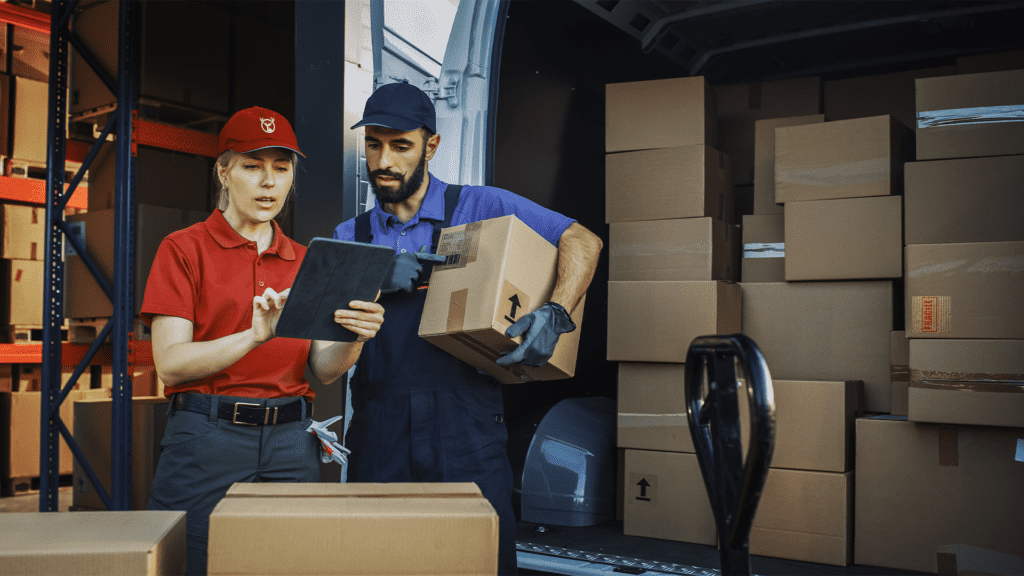
You deserve much more, and Red Stag Fulfillment can help get you there
Our processes and SLA guarantees help you stay closer to the 100% mark by eliminating errors, compensating for shrinkage, and offering competitive storage rates and pre-negotiated rates with carriers like FedEx and UPS. We provide specific, inventory-focused benefits over most other 3PLs on the market, especially if you ship heavy, high-value, and oversized goods.
Even during peak, we continue to excel and protect operations like yours. Here’s how we stacked up during 2021:
- Red Stag met our on-time shipment SLA 99.965% of the time
- 99.993% of orders left our warehouses correct and accurate during 2021, including a peak season rate of 99.976%
- We maintained a 99.991% inventory accuracy across 2021, climbing to 99.997% during peak
With our $100 example, every percentage gain works to protect an additional $1. Expand that to the hundreds of thousands or millions of dollars of products you sell annually. Those simple savings can become the difference between closing your doors or expanding to new markets and products.
Red Stag helps partners achieve that savings by building robust practices for every step in the fulfillment process. Streamlining efforts, introducing best practices, and training teams mean we can keep the total cost to deliver down.
We want to encourage you to consider the potential costs and savings not captured here. Ask what your business is missing out on by keeping fulfillment internal or if you choose the wrong partner. Is either slowing you down and costing sales or unnecessarily eating up revenue you could be investing in growth?
If you answered “yes,” it’s time to ask a Red Stag to help you improve the value you capture from each and every order.
